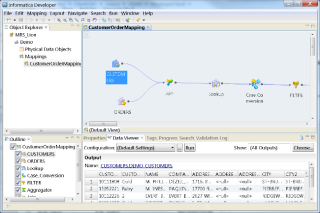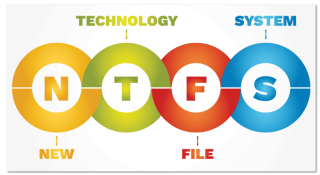ZPanel y Sentora en CentOS 6 x64

ZPanel, un panel de control de alojamiento web popular, se bifurcó en 2014 a un nuevo proyecto llamado Sentora. Aprende a instalar Sentora en tu servidor con este tutorial.
Chamilo is a free and open source learning management system (LMS) which is widely used for online education and team collaboration all around the world.
In this article, I will show you how to deploy the latest stable release of Chamilo on a CentOS 7 server instance.
203.0.113.1.chamilo.example.com, being pointed to the server instance mentioned above.In production, you need to modify firewall rules in order to allow only inbound TCP traffic on the SSH, HTTP, and HTTPS ports:
sudo firewall-cmd --permanent --add-service=ssh
sudo firewall-cmd --permanent --add-service=http
sudo firewall-cmd --permanent --add-service=https
sudo systemctl reload firewalld.service
On CentOS 7, you can use YUM to install the latest stable release of Apache:
sudo yum install httpd httpd-devel -y
Remove the pre-set Apache welcome page:
sudo sed -i 's/^/#&/g' /etc/httpd/conf.d/welcome.conf
Start the Apache service and make it auto-start on every system boot:
sudo systemctl start httpd.service
sudo systemctl enable httpd.service
Setup a YUM repo for the latest stable release of MariaDB on the system:
cat <<EOF | sudo tee /etc/yum.repos.d/MariaDB.repo
# MariaDB 10.3 CentOS repository list - created 2018-09-25 14:01 UTC
# http://downloads.mariadb.org/mariadb/repositories/
[mariadb]
name = MariaDB
baseurl = http://yum.mariadb.org/10.3/centos7-amd64
gpgkey=https://yum.mariadb.org/RPM-GPG-KEY-MariaDB
gpgcheck=1
EOF
Install MariaDB using the newly created MariaDB YUM repo:
sudo yum install -y MariaDB-server MariaDB-client
Start the MariaDB service and make it auto-start on every system boot:
sudo systemctl start mariadb.service
sudo systemctl enable mariadb.service
Secure MariaDB:
sudo /usr/bin/mysql_secure_installation
Press ENTER to use the defaults, and choose a secure password when prompted:
In order to get greater performance on the Chamilo LMS server, it's recommended to install PHP 7.2 packages rather than legacy PHP 5.x packages. Currently, you can use the Webtatic YUM repo to install required packages:
sudo rpm -Uvh https://mirror.webtatic.com/yum/el7/webtatic-release.rpm
sudo yum install -y mod_php72w php72w-opcache php72w-cli php72w-common php72w-gd php72w-intl php72w-mbstring php72w-mysqlnd php72w-process php72w-soap php72w-xml php72w-xmlrpc php72w-ldap php72w-pecl-apcu
Backup and update the PHP config file:
sudo cp /etc/php.ini /etc/php.ini.bak
sudo sed -i 's#;date.timezone =#date.timezone = America/Los_Angeles#' /etc/php.ini
Note: When working on your own server instance, make sure to replace the example timezone value America/Los_Angeles with your own. You can find all of the supported timezone values here.
Log into the MariaDB shell as root:
mysql -u root -p
In the MariaDB shell, input the following statements:
CREATE DATABASE chamilo;
CREATE USER 'chamilouser'@'localhost' IDENTIFIED BY 'yourpassword';
GRANT ALL PRIVILEGES ON chamilo.* TO 'chamilouser'@'localhost' IDENTIFIED BY 'yourpassword' WITH GRANT OPTION;
FLUSH PRIVILEGES;
EXIT;
Note: For security purposes, be sure to replace the database name chamilo, the database username chamilouser, and the password yourpassword with your own ones.
Download the latest stable release of Chamilo from the Chamilo GitHub repo. Be sure to choose the PHP 7.x-oriented release:
cd
wget https://github.com/chamilo/chamilo-lms/releases/download/v1.11.8/chamilo-1.11.8-php7.tar.gz
Extract all of the Chamilo files to the /opt directory:
sudo tar -zxvf chamilo-1.11.8-php7.tar.gz -C /opt
In order to facilitate daily use and potential updates, create a symbolic link, which is pointing to the /opt/chamilo-1.11.8-php7 directory, in the Apache web root directory /var/www/html:
sudo ln -s /opt/chamilo-1.11.8-php7 /var/www/html/chamilo
Modify the ownership of all Chamilo files to the apache user and the apache group:
sudo chown -R apache:apache /opt/chamilo-1.11.8-php7
Use the vi editor to open the same PHP config file we edited earlier:
sudo vi /etc/php.ini
Find the following lines respectively:
session.cookie_httponly =
upload_max_filesize = 2M
post_max_size = 8M
One by one, replace them as follows:
session.cookie_httponly = 1
upload_max_filesize = 100M
post_max_size = 100M
Save and quit:
:wq!
Setup an Apache virtual host for your Chamilo LMS site:
cat <<EOF | sudo tee /etc/httpd/conf.d/chamilo.conf
<VirtualHost *:80>
ServerAdmin [email protected]
DocumentRoot /var/www/html/chamilo
ServerName chamilo.example.com
ServerAlias example.com
<Directory />
AllowOverride All
Require all granted
</Directory>
<Directory /var/www/html/chamilo>
Options FollowSymLinks
AllowOverride All
Require all granted
</Directory>
ErrorLog /var/log/httpd/chamilo.example.com-error_log
CustomLog /var/log/httpd/chamilo.example.com-access_log common
</VirtualHost>
EOF
Restart the Apache service to put all of your modifications into effect:
sudo systemctl restart httpd.service
Point your favorite web browser to http://chamilo.example.com, and you will be brought into the Chamilo installation wizard. Click the Install Chamilo button to move on. The following section will walk you through the installation process:
Step 1 - Installation Language: Choose the language you'd like to use, such as English, and then click the Next button.Step 2 – Requirements: Make sure that all mandatory requirements have been met, and then click the New installation button.Step 3 – Licence: You need to review the GNU General Public licence (GPL), select the checkbox next to the I agree sentence, fill in all of the contact info fields, and then click the Next button to move on.Step 4 – MySQL database settings: Input the database credentials we setup earlier and then click the Check database connection button to verify them. Once verified, click the Next button to move on.Step 5 – Config settings: Make sure to modify the pre-set administrator password (a random string), fill in other fields according to your business plan, and then click the Next button to move on.Step 6 – Last check before install: Review all of the settings and then click the Install chamilo button to start the web installation.Step 7 – Installation process execution: When Chamilo is successfully installed, click the Go to your newly created portal. button to finish the web installation wizard.In addition, two post-installation safety measures you need to take are listed below:
sudo chmod -R 0555 /var/www/html/chamilo/app/config
sudo rm -rf /var/www/html/chamilo/main/install
ZPanel, un panel de control de alojamiento web popular, se bifurcó en 2014 a un nuevo proyecto llamado Sentora. Aprende a instalar Sentora en tu servidor con este tutorial.
Aprende cómo instalar Vtiger CRM, una aplicación de gestión de relaciones con el cliente, en CentOS 7 para aumentar tus ventas y mejorar el servicio al cliente.
¿Usando un sistema diferente? MODX Revolution es un sistema de gestión de contenido (CMS) de nivel empresarial rápido, flexible, escalable, gratuito y de código abierto escrito i
Vultr le ofrece una increíble conectividad de red privada para servidores que se ejecutan en la misma ubicación. Pero a veces quieres dos servidores en diferentes países.
Using a Different System? Introduction CyberPanel is one of the first control panels on the market that is both open source and uses OpenLiteSpeed. What thi
Using a Different System? ESpeak can generate text-to-speech (TTS) audio files. These can be useful for many reasons, such as creating your own Turin
¿Usando un sistema diferente? Thelia es una herramienta de código abierto para crear sitios web de comercio electrónico y administrar contenido en línea, escrito en PHP. Código fuente de Thelia i
¿Usando un sistema diferente? LibreNMS es un completo sistema de monitoreo de red de código abierto. Utiliza SNMP para obtener los datos de diferentes dispositivos. Una variedad
Cacti es una herramienta de gráficos y monitoreo de red de código abierto y libre escrita en PHP. Con la ayuda de RRDtool (herramienta de base de datos Round-Robin), Cacti se puede usar t
Usar un usuario sudo para acceder a un servidor y ejecutar comandos a nivel raíz es una práctica muy común entre Linux y Unix Systems Administrator. El uso de un sud
¿Usando un sistema diferente? Zabbix es un software gratuito y de código abierto listo para empresas que se utiliza para monitorear la disponibilidad de sistemas y componentes de red.
MODX es un sistema de gestión de contenido gratuito y de código abierto escrito en PHP. Utiliza MySQL o MariaDB para almacenar su base de datos. MODX está diseñado para el negocio i
YOURLS (Your Own URL Shortener) es una aplicación de análisis de datos y acortamiento de URL de código abierto. En este artículo, cubriremos el proceso de instalación
Using a Different System? RTMP is great for serving live content. When RTMP is paired with FFmpeg, streams can be converted into various qualities. Vultr i
LimeSurvey es una herramienta de encuestas en línea gratuita y de código abierto que se utiliza ampliamente para publicar encuestas en línea y para recopilar comentarios de encuestas. En este artículo, voy a
¿Usando un sistema diferente? Vanilla forum es una aplicación de foro de código abierto escrita en PHP. Es totalmente personalizable, fácil de usar y admite dispositivos externos.
¿Usando un sistema diferente? Netdata es una estrella en ascenso en el campo del monitoreo de métricas del sistema en tiempo real. En comparación con otras herramientas del mismo tipo, Netdata:
En este tutorial, aprende bien cómo configurar un servidor multijugador Just Cause 2. Requisitos previos Asegúrese de que el sistema esté completamente actualizado antes de comenzar
¿Usando un sistema diferente? En este tutorial, explicaré cómo configurar un servidor Starbound en CentOS 7. Requisitos previos Necesitas tener este juego contigo
ZNC es un enlace IRC gratuito y de código abierto que permanece permanentemente conectado a una red para que los clientes puedan recibir mensajes enviados mientras están desconectados. Thi
ZPanel, un panel de control de alojamiento web popular, se bifurcó en 2014 a un nuevo proyecto llamado Sentora. Aprende a instalar Sentora en tu servidor con este tutorial.
Aprende cómo instalar Vtiger CRM, una aplicación de gestión de relaciones con el cliente, en CentOS 7 para aumentar tus ventas y mejorar el servicio al cliente.
Esta guía completa le mostrará cómo configurar un servidor Counter-Strike 1.6 en Linux, optimizando el rendimiento y la seguridad para el mejor juego. Aprende los pasos más recientes aquí.
Los ataques de ransomware van en aumento, pero ¿puede la IA ayudar a lidiar con el último virus informático? ¿Es la IA la respuesta? Lea aquí, sepa que la IA es una bendición o una perdición
ReactOS, un sistema operativo de código abierto y gratuito, está aquí con la última versión. ¿Puede satisfacer las necesidades de los usuarios de Windows de hoy en día y acabar con Microsoft? Averigüemos más sobre este estilo antiguo, pero una experiencia de sistema operativo más nueva.
Whatsapp finalmente lanzó la aplicación de escritorio para usuarios de Mac y Windows. Ahora puede acceder a Whatsapp desde Windows o Mac fácilmente. Disponible para Windows 8+ y Mac OS 10.9+
Lea esto para saber cómo la Inteligencia Artificial se está volviendo popular entre las empresas de pequeña escala y cómo está aumentando las probabilidades de hacerlas crecer y dar ventaja a sus competidores.
Recientemente, Apple lanzó macOS Catalina 10.15.4, una actualización complementaria para solucionar problemas, pero parece que la actualización está causando más problemas que conducen al bloqueo de las máquinas Mac. Lee este artículo para obtener más información
13 Herramientas comerciales de extracción de datos de Big Data
Nuestra computadora almacena todos los datos de una manera organizada conocida como sistema de archivos de diario. Es un método eficiente que permite a la computadora buscar y mostrar archivos tan pronto como presiona buscar.





